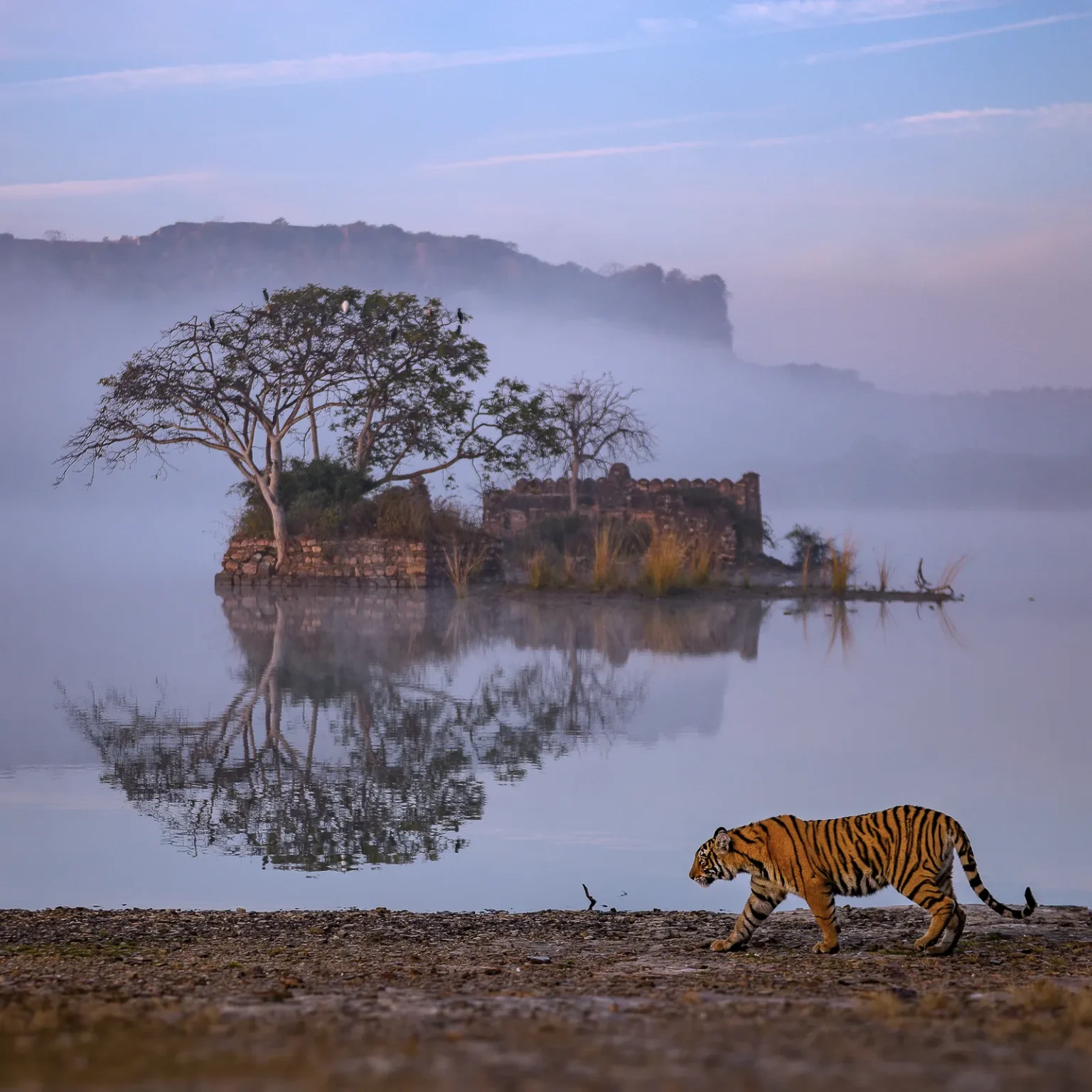
Ranthambore National Park stands as one of the largest and most renowned national parks in Northern India. Located in the Sawai Madhopur district of southeastern Rajasthan, approximately 145 kilometers southeast of Jaipur, Ranthambore has earned global recognition as a tiger reserve with a thriving tiger population.
TOUR DETAILS
Jaipur – Ranthambore (145 km – 3 to 4 hours)
Your journey begins at 8:00 AM when our representative picks you up from your preferred location in Jaipur, ready to embark on an exciting adventure to Ranthambore by car. As you settle into the car, a sense of anticipation and excitement envelops you, knowing that you are about to embark on a remarkable journey. Along the way, you’ll be surrounded by picturesque agricultural landscapes, glimpses of local life with vibrantly dressed people, and intriguing monuments that add to the charm of your route.
Ranthambore National Park
Around noon, you’ll arrive at Ranthambore. This renowned wildlife sanctuary is celebrated globally for its exceptional tiger sightings, and your one-day trip promises to infuse excitement and exhilaration into your routine.
Upon arrival, you’ll complete the necessary identification procedures for entry into the forest. Subsequently, you’ll be assigned a gypsy vehicle to explore the natural habitat of a diverse array of wildlife, including bears, hyenas, deer, wild boars, leopards, and, of course, the majestic tigers. Once your jungle safari adventure concludes, our company representative will ensure your seamless transition back to the car.
Ranthambhore National Park
Ranthambhore proudly claims its position as one of the largest national parks in Northern India, spanning an expansive 392 square kilometers. It is nestled in the Sawai Madhopur district of southeastern Rajasthan, approximately 160 kilometers southeast of Jaipur, the nearest airport. The nearest town and railway station can be found in Sawai Madhopur, just 11 kilometers away.
The journey of Ranthambhore’s transformation began in 1955 when it was established as the Sawai Madhopur Game Sanctuary by the Government of India. It was elevated to the status of one of the Project Tiger reserves in 1973, and in 1980, it was officially designated as a national park. Further expansion occurred in 1984 when the adjacent forests were declared the Sawai Man Singh Sanctuary and Keladevi Sanctuary. Finally, in 1991, the tiger reserve was enlarged to encompass the Sawai Man Singh and Keladevi sanctuaries.
Ranthambhore’s fame predominantly rests on its resident tigers, making it one of the premier destinations in India for observing these majestic creatures in their natural jungle habitat. Tigers here are known to be easily spotted, even during daylight hours. The prime months for tiger sightings at Ranthambore National Park are November and May. The park is characterized by deciduous forests that typify Central India’s jungle terrain. Other significant wildlife includes leopards, nilgai, wild boars, sambar deer, hyenas, sloth bears, and chital. The sanctuary also boasts a diverse range of trees, plants, birds, reptiles, and is home to one of India’s largest banyan trees.
Ranthambore National Park is a natural paradise situated in the heart of India, beckoning travelers and wildlife enthusiasts from across the globe. Nestled in the Sawai Madhopur district of Rajasthan, this wildlife sanctuary is not just a sanctuary for animals but also a sanctuary for the soul. In this article, we’ll embark on a journey through this magnificent wilderness, exploring its rich biodiversity, historical significance, and the thrill of spotting the majestic Bengal tigers that call it home.
The History of Ranthambore
Ranthambore boasts a rich historical legacy that dates back to the 8th century. The park gets its name from the Ranthambhore Fort, a UNESCO World Heritage Site, which stands majestically within its boundaries. The fort has witnessed the rise and fall of dynasties, from the Chauhans to the Mughals, and even the British Empire. Its architectural marvels and ancient ruins make it a captivating attraction for history buffs.
A Biodiversity Hotspot
Spanning over 1,334 square kilometers, Ranthambore National Park is a biodiversity hotspot. Its diverse landscapes, from dense forests to open meadows and serene lakes, provide a perfect habitat for a wide array of flora and fauna. The park is home to over 300 species of birds, making it a haven for birdwatchers.
The Star Attraction: Bengal Tigers
Undoubtedly, the park’s crown jewel is its population of Bengal tigers. These magnificent creatures are the stars of Ranthambore, drawing wildlife enthusiasts and photographers alike. The park’s dry deciduous forests offer an ideal setting for tiger sightings, and you can feel the adrenaline rush as you spot one of these elusive cats in their natural habitat.
A Safari Adventure
Exploring Ranthambore National Park is an adventure in itself. The park offers safari experiences, both in open jeeps and canters, allowing visitors to get up close and personal with the wildlife. Expert guides accompany these safaris, sharing their knowledge about the park’s inhabitants and their behaviors. It’s an opportunity to witness not only tigers but also leopards, sloth bears, Indian striped hyenas, and more.
Birdwatcher’s Paradise
For bird enthusiasts, the park is a paradise. From the vibrant Indian paradise flycatcher to the elusive crested hawk-eagle, Ranthambore’s avian diversity is a treat for the eyes. The melodious calls of various birds add to the enchantment of the park.
Best Time to Visit
The ideal time to visit Ranthambore National Park is from October to June. During this period, the weather is pleasant, and the park is open for tourism. However, the months of April to June are particularly thrilling for tiger sightings, as the dry season forces wildlife to congregate around water bodies, making them easier to spot.